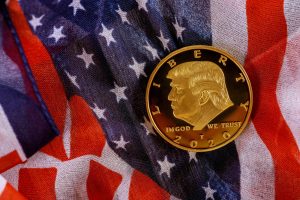President Trump may be softening his tone — but the tariff whirlwind continues to swirl.
This week brought a glimmer of diplomacy amid a high-stakes global trade standoff. Trump suggested he was open to renegotiations with U.S. trading partners, even as his administration pressed ahead with expanded tariffs — particularly on China.
“We are going to make a very good deal with China,” Trump told reporters Thursday, marking a sharp contrast to the harsher rhetoric from earlier this month. He later added that he was “reluctant” to keep increasing tariffs and hinted at possibly reducing them to ease the burden on U.S. consumers.
Despite the optimistic framing, tensions with China remain high. The White House clarified that Chinese imports now face up to 245% in total tariffs, a mix of reciprocal levies, anti-fentanyl penalties, and Section 301 tariffs targeting strategic sectors. China, for its part, has retaliated with a 125% duty on American goods, up from 84%.
Global Trade Dominoes: Japan, Mexico, Italy in the Spotlight
While the U.S.-China dynamic dominates headlines, Trump also signaled diplomatic progress with several allies.Talks with Japan were described as showing “big progress”, though Tokyo expressed concern over the broader economic fallout from prolonged trade disputes.
A phone call with Mexican President Claudia Sheinbaum was deemed “very productive,” and Italy’s Prime Minister Giorgia Meloni visited the White House for discussions that Trump framed as cooperative.
Treasury Secretary Scott Bessent added fuel to the optimism, telling Yahoo Finance that the administration may provide “substantial clarity” on the evolving tariff policy before key deadlines. However, many of the larger levies remain in place — including the baseline 10% tariff on all global imports, which took effect on April 5.
Mixed Signals for Markets and Businesses
Even as Trump floated potential exemptions for autos and consumer electronics, most sectors remain in limbo. Companies and investors are left trying to forecast their next moves amid shifting trade policy.
While negotiations are ongoing, it’s clear that tariffs have already disrupted global trade flows, dampened consumer confidence, and put pressure on multinational corporations. Wall Street remains on edge, watching for hard commitments or signs of reversal.
Whether Trump’s evolving stance signals a true policy pivot or a strategic pause remains to be seen. For now, the business world is left to navigate a volatile tariff landscape that’s as much about geopolitics as it is about economics.







